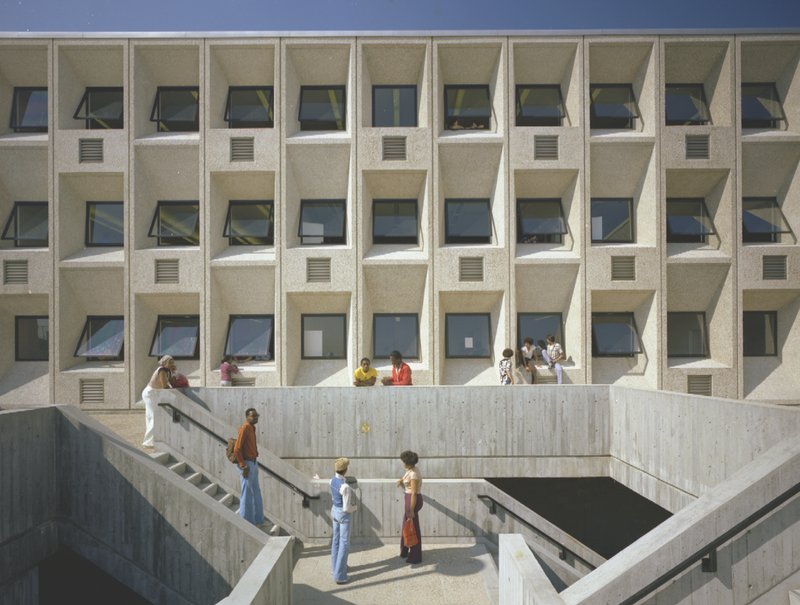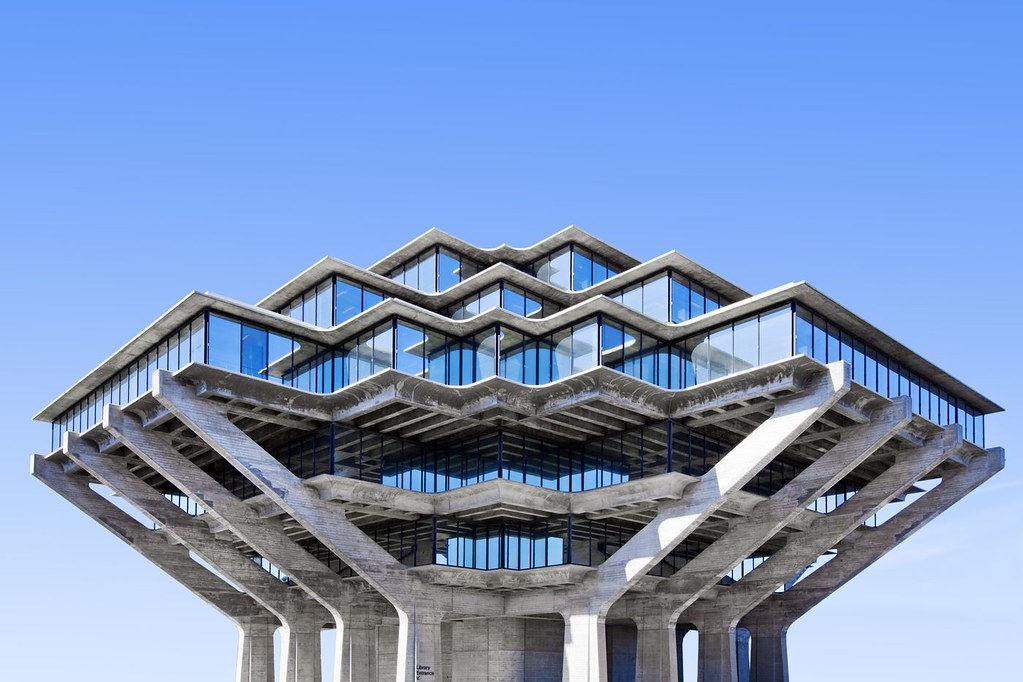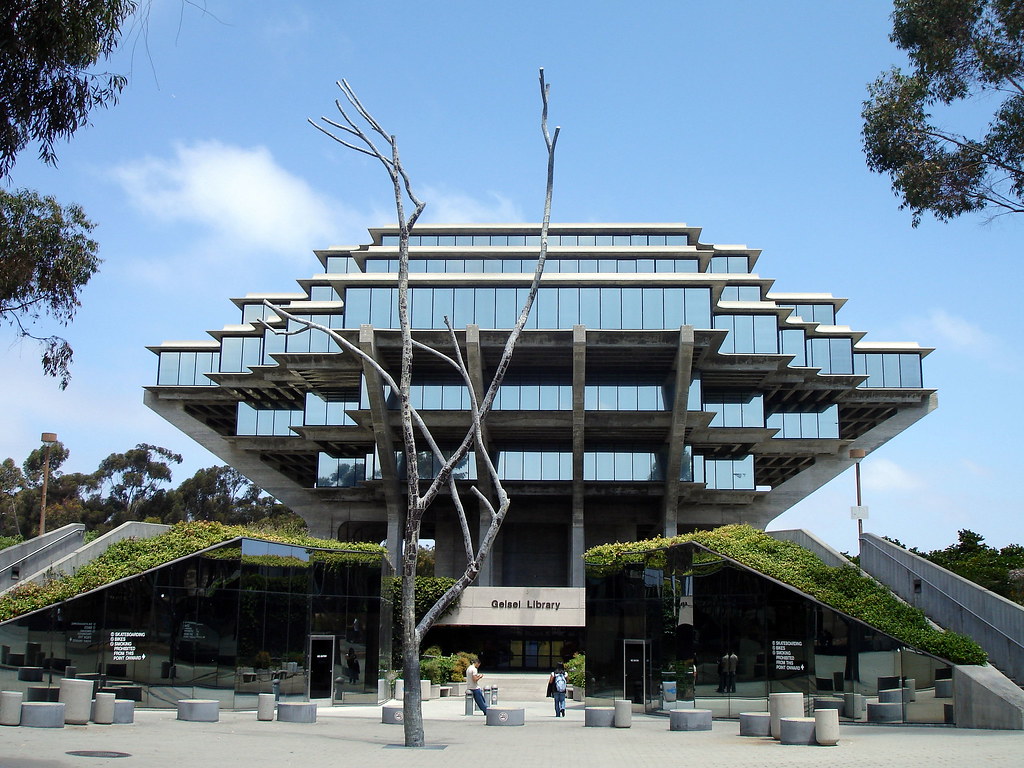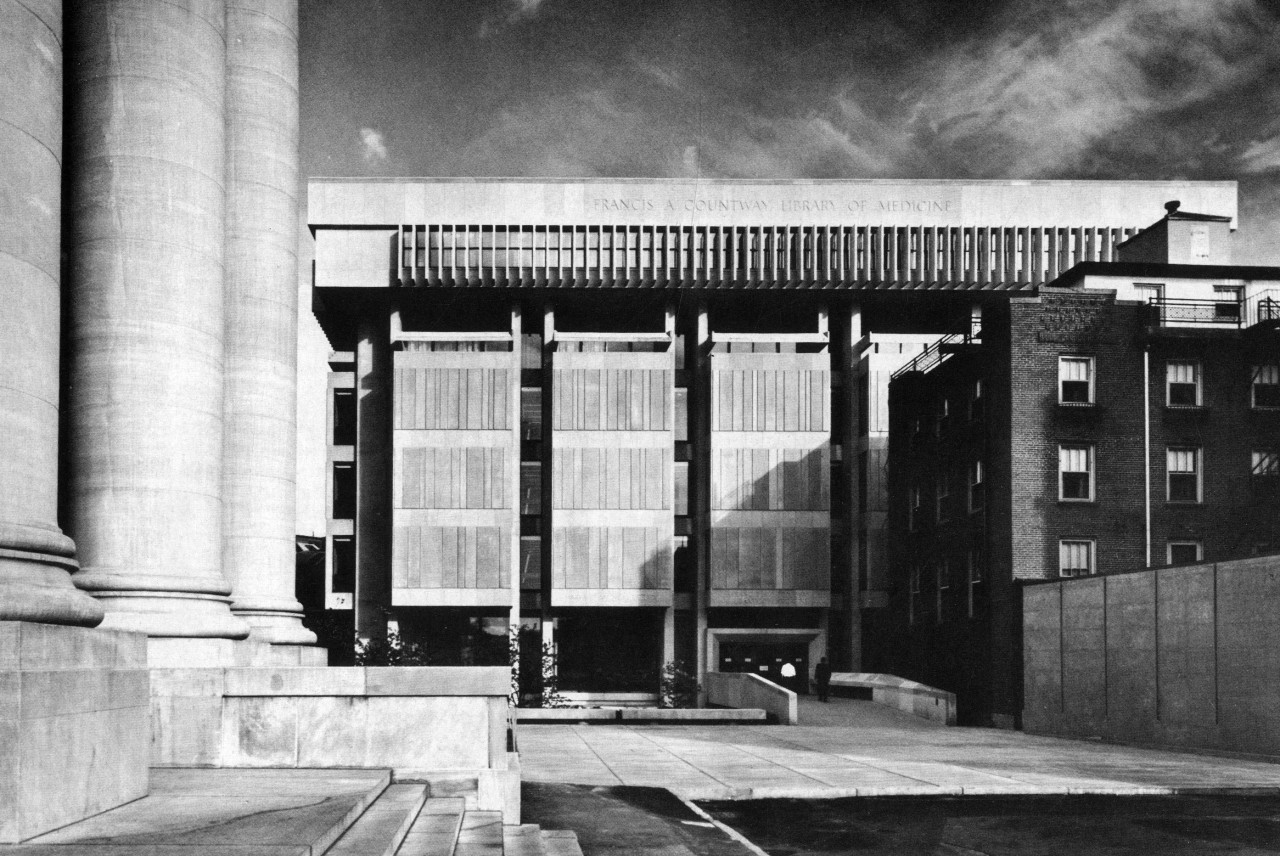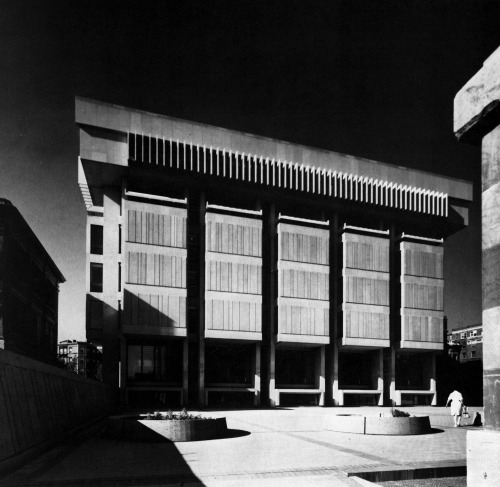Allow me to add this wonder from Wikipedia:
Geisel Library is the main library building of the University of California, San Diego Library. It is named in honor of Audrey and Theodor Seuss Geisel, better known as Dr. Seuss. The building's distinctive Brutalist architecture has resulted in its being featured in the UC San Diego logo and becoming the most recognizable building on campus..."
i don't know why, but i naturally avoided Geisel. The novelty of the building itself wears quickly. Inside it is rather sanitized and lousy. It was kind of a haul, and i had a preference for the Humanities Undergraduate Library (a.k.a Galbraith Hall) on the extreme south end of campus. HUL was built at the beginning with Revelle–an abjectly hideous expanse of concrete.... but more convenient for getting down to Blacks for some waves, then throwing the board in my dorm and cruising over to HUL, which was about 2 minutes by skateboard from the middle of Muir.
HUL was more social and also a better place to hang with my friends from Muir and Revelle, and frankly a fun flirty/pickup spot, just off the Center Plaza of Revelle, and the main social gathering place on campus. ...Geisel was located in a less desirable part of campus past Third and Warren, barren, somewhat geeky and sort of depressing.
By contrast, the area between Revelle and Muir was (then) simply breathtaking. if you took a slight detour you could swing past the Sun God and saunter into the 'talking forest;' a thick strand of eucalyptus trees... then on the way back to Muir you passed a large open area filled with another strand of huge eucalyptus trees...
Since the mid-90's, there's been far too many trees cut down all over what was once, a really beautiful campus–you guesed it; to build more buildings. Makes me furious to think about it.
Dr Suess could be spotted on campus occasionally. He lived in a weird house over by Mount Soledad, before he passed in the early 90s.
here's the talking forest, looking less full and nice than a 1/4 century ago.
https://www.youtube.com/watch?v=cO_jIz-TNdM

